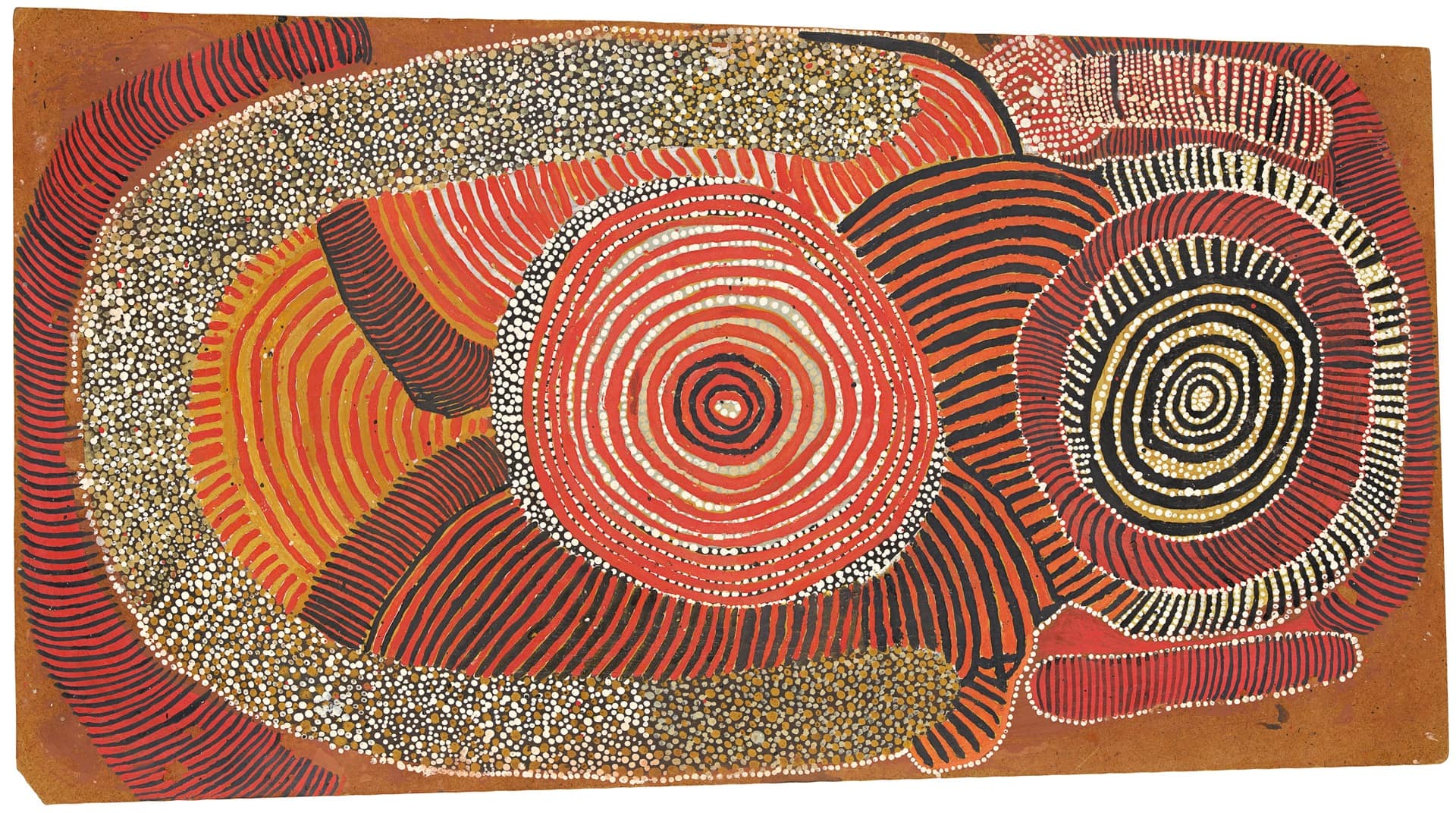The year was 1977, and Anatjari was at the height of his success as an artist. He was a serious, observant man of friendly silences, and on the rare occasions that he spoke it was with a gentle, quiet voice. (R. G. (Dick) Kimber, 2011)
Anatjari Tjakamarra was born in southern Pintupi country near the rockhole site of Kurlkurta in Western Australia, where he lived with his family until they started to walk towards settlements in the east in 1966. On their journey, they encountered a Weapons Research Establishment patrol that transported them to Papunya where they were re-united with other members of their extended family.
One of the later arrivals at Papunya from country to the west, Anatjari had just come into the full powers of ritual maturity. He began painting in 1971 and immediately distinguished himself among the other artists as a highly skilled painter who produced elaborate and carefully planned depictions of ceremonial objects and designs. During the 1970s he made a successful transition to large canvas and painted particularly strongly in the late 1980s, when moving between homeland centres of Kiwirrkura and Tjukurla that were closer to his birthplace, Kurlkurta.
In 1988 one of Anatjari’s paintings was acquired by the Metropolitan Museum of Art from a group exhibition at John Weber Gallery in New York, where his first solo exhibition was held the following year.


